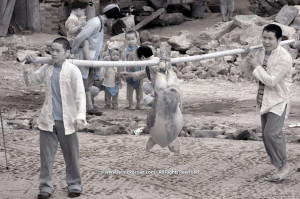Travel Blog: Food in Guizhou, China
*** WARNING: for those who are squeamish about animal husbandry and/or are sensitive about the treatment of animals, then please do NOT read this blog. Photos include dead animals as well as animals in distress.
+ + + + + + + + + + + + + + + + + + + +
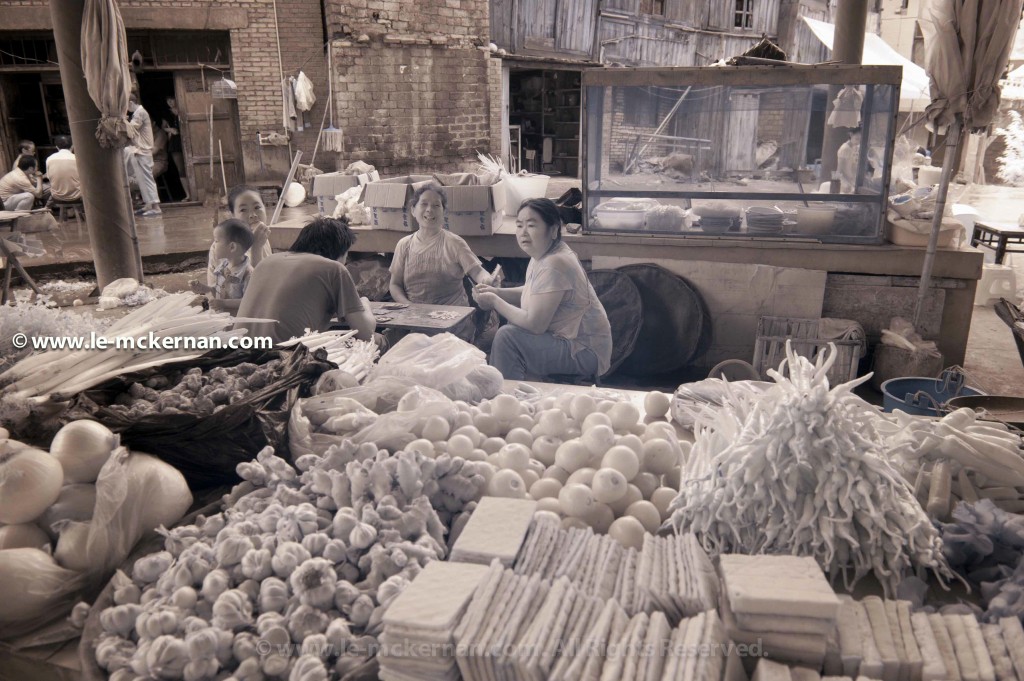
Market vendors play card during a lull in the afternoon
RICE:
As everyone in the West knows, China is the land of rice. And, yes, there was rice, rice, rice everywhere. From rice in a bowl to rice noodles to rice soup (not congee or porridge — but rather, the leftover liquid when cooking rice), we had rice every day. While we were not surprised by the omnipresence of rice, what was surprising was that rice was served AFTER the main dishes were served. In the West, rice is served with the Chinese dishes — it is the spaghetti to the bolognese sauce. However, on this trip, rice actually became almost an afterthought for our group as we started tucking into our food the moment the main dishes were laid out.
PIGS:
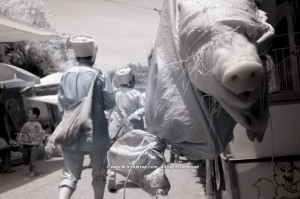
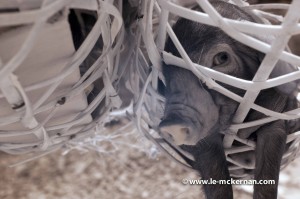
China is not the place to be reincarnated as a pig! Pork is as ubiquitous as rice on the menu. (TIP: if you are a vegetarian, then be sure to be clear that you don’t eat meat because in some places ‘vegetarian’ may mean ‘less meat’ rather than ‘no meat’. In particular, tofu dishes are often topped with minced pork.) In addition to being on the menu, pigs also appear to be the animal of choice when it comes to animal sacrifices at the festivals. While there, we’d witnessed two pig sacrifices — one death was quick whereas the other sadly resulted in the pig squealing for up to four minutes!
At a village festival, once the pig was killed, it was taken away and roasted ontop of an open fire. The local men then scraped the burnt skin off with sharp knives while a pack of village dogs eargerly (but carefully) surround the irresistible smelling carcass. Once the tough outer skin was removed, the men disembowelled the pig. This included blowing air into the intestines so that the contents are bunched up and easier to remove.
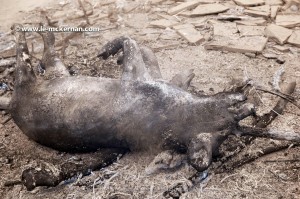
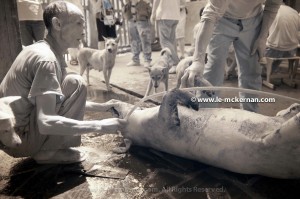
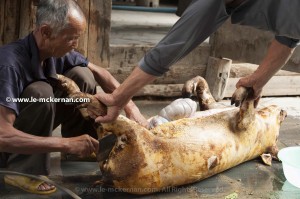
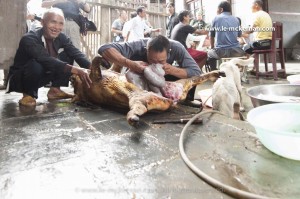
Pork is as central in death as it is central in life in Guizhou. During our 2 weeks in the region, we unexpectedly stumbled across (and were warmly welcomed at) two separate funeral celebrations. At the first event, the men in the villages held an equivalent to what we would recognized as a multi-day Irish wake. Our first warning to the amount of celebration commited by the men the night before was the fact that we found three men fast asleep on the road as we entered the village !!! Inside the town hive, we found the women preparing more food (pork and rice) whilst the men were eating, drinking and (for some) sleeping. In the first picture, there is a man sleeping on the floor between the two tables and in the second picture, the man on the chair is fast asleep.
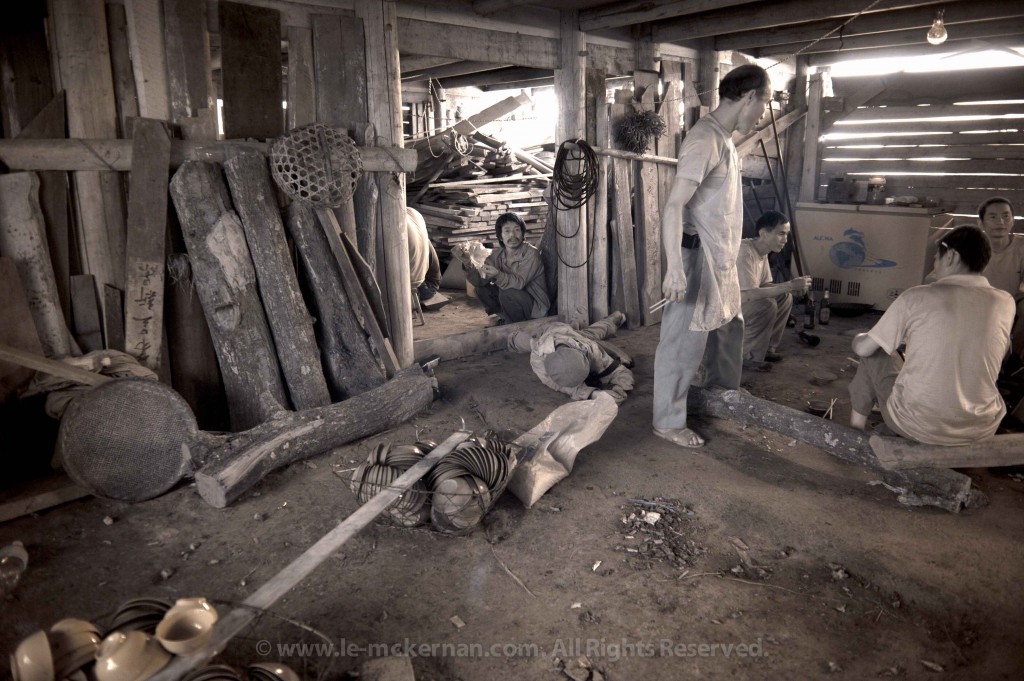
Funeral celebration in a small hilltop village

The view from the kitchen — pork is the centerpiece of celebration
The second funeral celebration was a much larger affair. In addition to the ritual ceremony performed by the head shaman, the evening included fireworks, music, and dancing. For this event, five adult pigs were killed. (For more information about this event, please see the travel blog on Guizhou.)
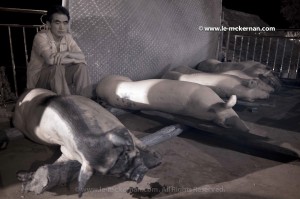
Poultry:
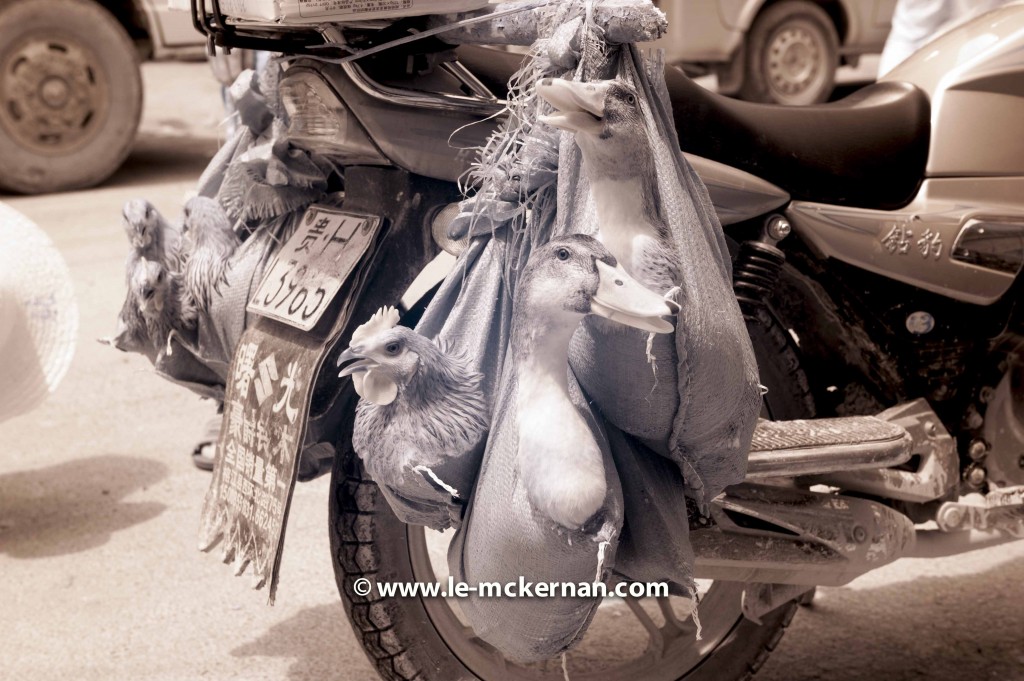
Life as poultry in China is no better or easier than that of pigs. No matter how small, every market that we visited had live poultry for sale. In one wet market, we witnessed the full slaughter process. Not a pretty sight but it was very insightful to see the end-to-end process as documented in the below photographs.
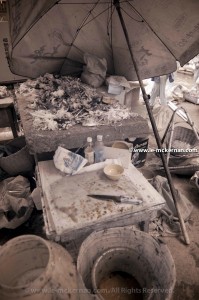
the killing zone . . .
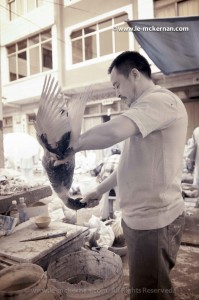
Step 1: cut neck and drain blood

Step 2: drop body into bucket until duck is fully dead (it thrashes about for about a minute)

Step 3: duck is immersed in a waxy-like liquid for a few minutes

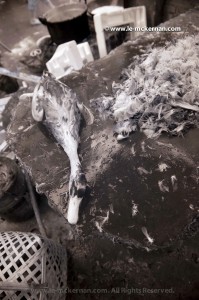
Step 4: remove duck from waxy liquid and allow to cool. Then, pluck the feathers
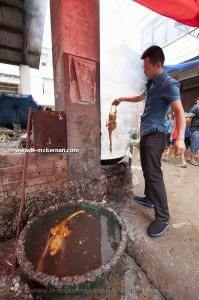
Step 5: dunk duck into another vat for a few more minutes. Then remove and dunk into cool water (now red with blood).
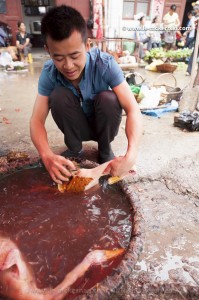
Step 6: once cooled off, proceed to rip off the skin/residual feathers.
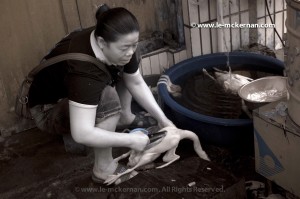
Step 7: rinse duck and proceed to cut it up for consumption.
DOGS:
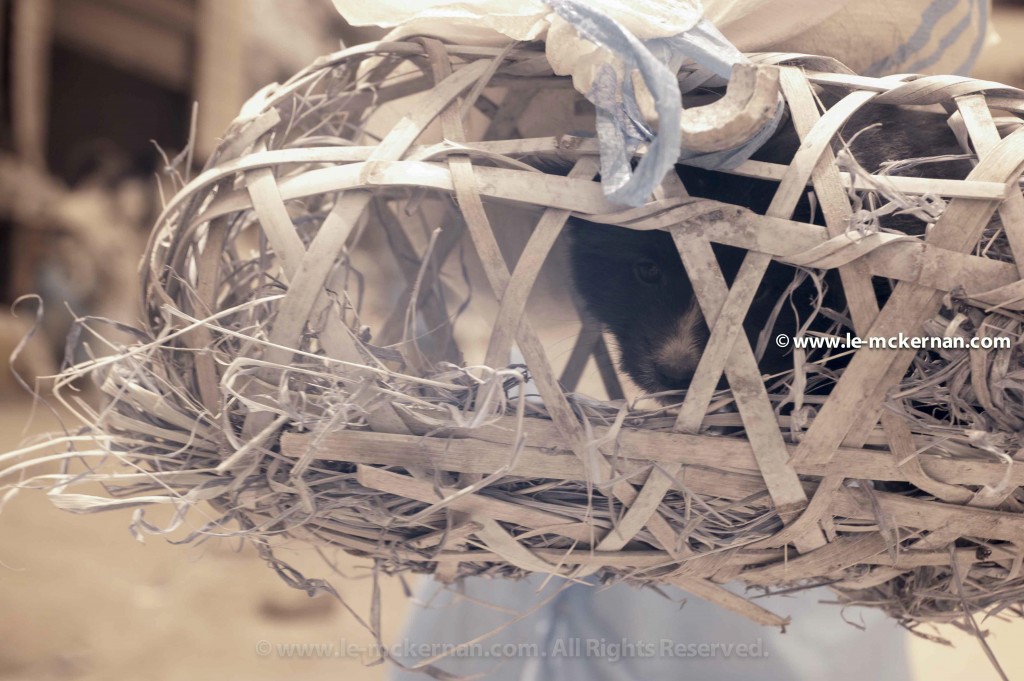
Anyone writing a travel blog about Guizhou, China cannot escape the mention of dogs as food. (This is evident in the Financial Times article about the region whereby the daughter of the author begs the writer not to eat the brown dogs as brown dogs are reputably tastier!) But what is also inescapable is China’s history of famine — and the history is within living memory. As such, there isn’t much sentimentality about animals as pets. And whilst it may cause discomfort to animal lovers to see animals treated as commodities (as foodstuff as well as for fighting), this is a fact of life in mainland China.
The bizarre aspect is that we saw people selling dogs in markets and yet there are many stray dogs about. (Why pay for dogs when you can snatch a stray easily?) In addition, we saw dogs that were clearly pets — in Kali, we actually saw a Siberian husky (purebreed) in the park going for an evening walk with the owner and in the villages, we saw dogs will collars (with bells attached). Moreover, in a restaurant that serves dog meat, we saw that it had a puppy as a pet (not in chains or in a bamboo cage — telltale signs that it is destined for the pot).
We were careful not to eat dog meat whilst there. But, for the average person in Guizhou, it is the equivalent as us eating chicken!
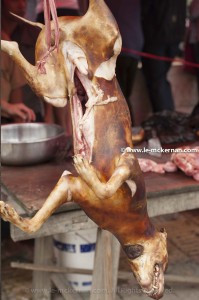
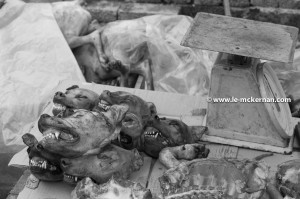
Streetfood:
There was a vibrant night food market by the stadium in Kali. As our visit coincided with the London 2012 Summer Olympics and given the strong local interest in the games, the city officials have installed large TV screens around the stadium. As such, we were able to watch the games whilst drinking and snacking al fresco.
The tastiest dish (and the most surprising) was the grilled river crabs. These were beautifully spiced and grilled. They are eaten with shells on. As the shells were soften by the grill, they were just the right level of crunchy and completely yummy!!!

A Last Word on Staying Healthy While Eating in China . . .
It is a testimony to our tour leader and the local fixers that no one in our group (total size is 9) fell ill during our 2 weeks excursion around Guizhou. While there, we ate at local restaurants (often little ‘mom and pop’ shops on the street) — there were no McDonald’s or western restaurants. Even if there were, we tried to avoid them altogether as the goal was to go local.

The list below are steps we’d taken to help give ourselves the best chance to avoid the little nasties that often plague travellers.
- Have very good fixers as they would chose the best-available restaurant in the vicinity.
- Clean hands with sanitizers before eating.
- We had our own chopsticks, spoons and drinking mug. Before eating, we would clean these with alcohol wipes.
- Wipe off any water from bowls before using them.
- If sharing communal food, then have serving utensils. If not available, then use the other end (i.e. the clean end) of one’s chopsticks when serving from the communal plate.
- Avoid uncook food such as salads. Most food in China is fried in very hot oil so we were reasonally assured that any pathogens are killed. (Our fixers knew not to order uncooked food.)
- If eating fruits, then do not eat the skin.
- Beer, wine and bottled water only. No ice. No fruit juices.
- Relax and enjoy the food. Hangups about food (or obsession with breakfast bars, etc.) will lead to anxieties and possibly constipation (if eating only cereal bars — too much fiber!).

Enjoy!
